Women’s Health Issues and Dangerous Products
Home » Women’s Health Issues and Dangerous Products
Women have a unique set of health challenges that are influenced in large part by the hormone changes that occur throughout their lives. The reproductive cycle can take a toll on a woman’s body, even if she never has children.
In addition to the cases we handle of mesothelioma in women, it is important to understand more common health issues and events women experience in their lives. Women have longer lifespans, stronger immune systems, and better trauma survival rates than men. They are also more likely to visit their doctors and participate in preventive health screenings. Yet they spend 15% of their lives in poor health, compared with just 12% for men, and they are more likely to be diagnosed with many chronic health conditions.
While women’s proactive approach to healthcare is wise, it does not always work in their favor. Pharmaceutical companies have a history of pushing products for women that are not safe or effective and failing to provide the proper warnings about potential risks. Additionally, clinical drug trials are often performed with only male participants, resulting in overmedicating and adverse reactions in women. Environmental toxins are linked to pregnancy complications and birth defects, in addition to multiple types of cancer and neurological disorders.
Women and Cancer
Cancer was the second-leading cause of death among adults in the United States in 2020, leading to 284,619 female deaths. The American Cancer Society estimates that 934,870 females were diagnosed with cancer in 2022.
Breast Cancer
Breast cancer is the most common form of cancer among American women, accounting for 30% of new cancer diagnoses in women. Approximately 1 in 8 women develops invasive breast cancer over the course of a lifetime. If the current trend continues, 287,850 new cases of invasive breast cancer and 43,250 deaths were expected in 2022.

Breast cancer risk factors:
- Being a woman
- Race/ethnicity
- Age
- Family history and genetics
- Lack of pregnancy or first pregnancy after age 30
- Lack of breastfeeding history
- Onset of menstruation before age 12 or completion of menopause after age 55
- History of hormone replacement therapy, especially combination (progesterone and estrogen) therapy
- History of use of products containing dibutyl phthalate, an endocrine disruptor used in many medications and cosmetics
- Radiation exposure
- Dense breasts
- Lack of exercise
- Smoking
- Alcohol consumption
- Poor diet
- Obesity
Breast cancer tends to spread to the lymph nodes and then to other parts of the body. This makes early detection an important factor in the prognosis. During the early stages of cancer, tumors are small, and cancer is confined to the breast tissue and nearby lymph nodes.
During the later stages, tumors get larger and spread to an increasing number of lymph nodes and ultimately to other organs.
The earlier the stage of cancer at the time of diagnosis, the higher the survival rate. Stage 0 cancer (precancer) and stage 1 cancer have 100 percent five-year survival rates. The survival rate for stage two cancer is 93 percent, but it drops to 72 percent for stage 3 and just 22 percent for stage four.
Tamoxifen
Most breast cancer cells have hormone receptors for estrogen or progesterone. These hormone-positive cancers begin in the milk ducts or lobules. Tamoxifen is a drug used to prevent or treat estrogen-positive breast cancer by blocking estrogen production. It can be prescribed to postmenopausal women and premenopausal women over age 35.
- Hot flashes
- Irregular periods
- Spotting between periods
- Leg cramps
- Vaginal discharge, dryness, or itching
- Blood clots (deep venous thrombosis) in the large veins
- Blood clots in the lungs (pulmonary embolism)
- Cancer of the uterus or lining of the uterus
- Cataracts
- Stroke
- Raloxifene is an alternative to Tamoxifen that is less effective but has fewer side effects.
- Taxotere is a popular chemotherapy drug that has had unexpected side effects, resulting in lawsuits:
- Permanent hair loss
- Vision loss
Ovarian Cancer
Ovarian cancer is the deadliest reproductive cancer in women. It impacts one in 78 women. The National Cancer Society estimates that 19,880 women were diagnosed with ovarian cancer in 2022, and 12,810 died.
When ovarian cancer is diagnosed at an early stage, the five-year survival rate is 94%. Unfortunately, only 20% of ovarian cancer cases are diagnosed early. Women rarely experience symptoms during the early stages, and there are no reliable early screening tests.

Talcum Powder Linked to Ovarian Cancer
Many cases of ovarian cancer can be attributed to asbestos exposure through contaminated talcum powder. Talcum powder was the main ingredient in Johnson & Johnson’s Baby Powder and Shower to Shower. Johnson & Johnson advertised these products as feminine hygiene products.
Talcum powder is made from talc, a mineral often found in close proximity to asbestos. This means the risk of contamination is common. When Johnson & Johnson discovered their products were contaminated, they concealed the information and continued promoting them.
Studies have found a direct link between talc products and ovarian cancer, even when they were not used for feminine hygiene. Johnson & Johnson has paid billions of dollars in thousands of lawsuits and no longer offers talc-based products in the United States.
Cervical Cancer
Cervical cancer was once the most common cancer death in women, but thanks to the widespread availability of early screening, it is almost always caught during the pre-cancer stage. The American Cancer Society anticipated 14,100 new cases and 4,280 deaths from cervical cancer in the United States in 2022.
The most significant risk factors include:
- Multiple sex partners
- Unprotected sex
- Smoking
- Exposure to human papillomaviruses (HPV)
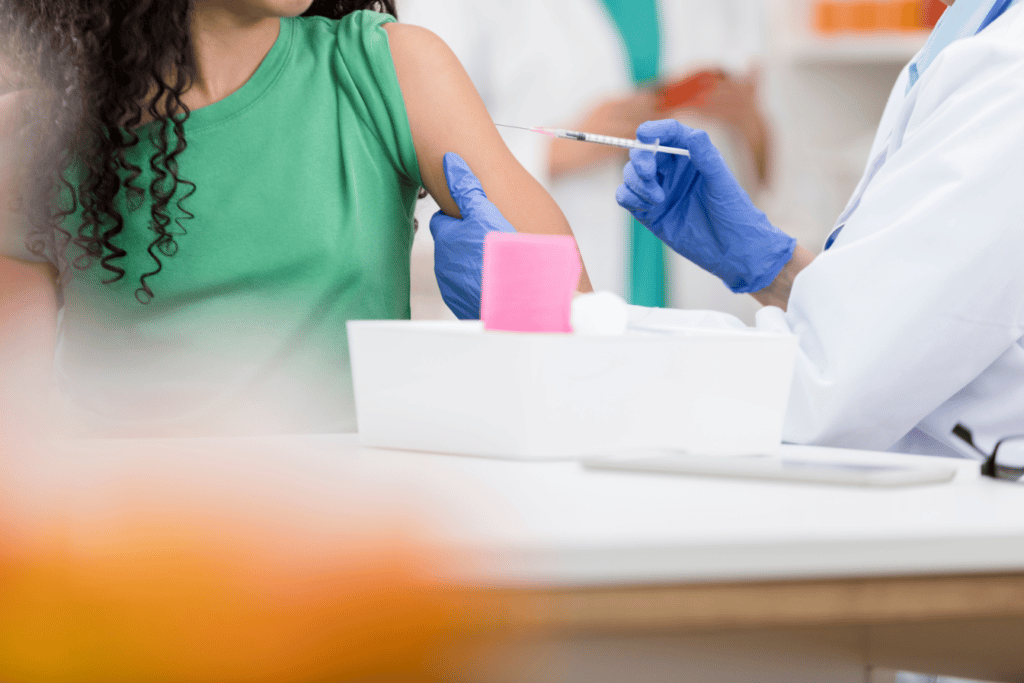
HPV
Human papillomaviruses are a group of viruses, most of which cause warts or non-cancerous tumors (papillomas). These affect the mucous membranes, especially around the vagina, anus, cervix, vulva, inner nose, mouth, throat, trachea, and inner eyelids.
It spreads by physical contact with the affected area, especially sexual contact. High-risk types of HPV can cause cervical cancer. Although less common, cancers of the throat, vulva, vagina, mouth, and throat may be attributable to HPV.
The Gardasil 9 vaccine can prevent HPV when administered early in life, either as a series of two injections in children ages nine to 12 or as a series of three injections in young adults ages 13 to 25. The vaccine is most effective when administered at a young age. It is not recommended for adults over the age of 26. There is pending litigation against Merck, the maker of Gardasil. HPV vaccine side effects lawsuits claim that the warnings were inadequate.
Early Detection
Other Types of Cancers
Ranitidine, sold under the brand Zantac, was a widely used antacid that was contaminated with N-nitrosodimethylamine (NDMA), a known carcinogen. Consequently, it has been linked to gastrointestinal cancers, including cancers of the following:
- Stomach
- Larynx
- Pharynx
- Anus
- Intestines
- Liver
- Gall bladder
- Pancreas

Previously thought of as a man’s disease, the incidence of lung cancer in women is rising at an alarming rate, with an 84% increase among women over the last 42 years. Smoking is the most significant factor, but 20% of women diagnosed with lung cancer have no smoking history. There are no behavioral explanations for the increase in lung cancer in women.
Exposure to the following substances has been linked to a higher risk of lung cancer:
- Tobacco smoke
- Secondhand smoke
- Radon (leading cause of lung cancer in non-smokers)
- Asbestos Exposure
- Exposure to workplace hazards, such as industrial chemicals and diesel exhaust
- Air pollution
- Angiotensin-converting enzyme drugs (ACEIs), a class of drugs commonly used to manage high blood pressure
Family history is also a significant risk factor for lung cancer.
Reproductive Health
Birth Control

- Oral contraceptives produced by Bayer Corporation
- Contain drospirenone, a type of synthetic progesterone (progestin), which is different from the form used in other oral contraceptives
- Contain Ethinyl estradiol, a synthetic estrogen
- A contraceptive patch that delivers hormones transdermally
- T-shaped contraceptive device placed into the uterus through the cervix
- A clear, flexible contraceptive “ring” that is inserted into the vagina monthly for three weeks and releases contraceptive hormones
Depo Provera
- An injectable contraceptive that is administered every three months
- 2024 Update: Depo-Provera Lawsuits may be filed on behalf of women diagnosed with brain tumors after use

Endometriosis
Endometriosis occurs when tissue that is similar to the lining of the uterus, the endometrium, grows outside the uterus.
This tissue may grow on the ovaries or fallopian tubes, and, less commonly, in the vagina, bowel, bladder, or rectum. Rarely, growths may also appear in other parts of the body, including the lungs, brain, and skin.
Although the growth is non-cancerous, it can cause severe symptoms, including pain, inappropriate menstrual bleeding, digestive issues, and infertility.
- Retrograde menstrual flow
- Genetic factors
- Immune system disorders
- Hormones imbalances, especially involving estrogen
- Surgical errors
Pregnancy
Women’s bodies change significantly during pregnancy to accommodate the needs of both the mother and the growing fetus. Hormone levels fluctuate in the mother while the fetus receives nourishment from the mother’s blood supply via the placenta. During this time, common medications can cause miscarriages and birth defects, in addition to the risk of asbestos exposure during pregnancy resulting in negative long-term health effects for mother and child.
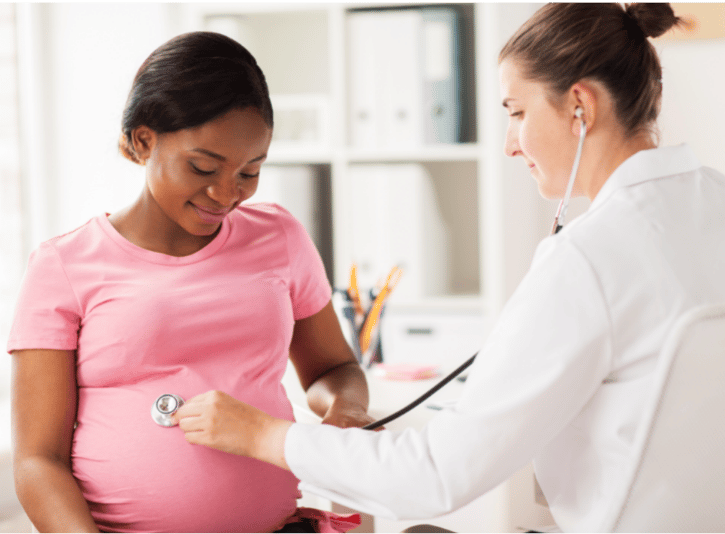
The following medications have been shown to cause miscarriages:
- Ibuprofen
- Isotretinoin (an acne medication)
- Ergotamine and methysergide (migraine medications)
- Natalizumab (an MS medication)
- Antithyroid medication
- Certain vitamins and herbal preparations
- Methotrexate (a rheumatoid arthritis drug)
The following medications are known to cause birth defects:
- Thalidomide
- DES (Diethylstilbestrol)
- Accutane (isotretinoin)
- Aspirin
- Ibuprofen
- Naproxen
- ACE inhibitors used to treat hypertension
- Statins
- Many antibiotics
- Benzodiazepines
- Warfarin
- Certain antiseizure medications
- Certain antidepressants
- Psychiatric medications
More recently, research has revealed that using acetaminophen during pregnancy presents an increased risk of the child developing autism spectrum disorder or ADHD.
Women who are pregnant or thinking about becoming pregnant should check with their doctors prior to starting any new medication, vitamin, or herbal therapies.
Breastfeeding
While breastfeeding is widely regarded as the healthiest feeding system for infants, it is contraindicated in some circumstances:
- The infant is diagnosed with galactosemia, a rare genetic disorder that causes a strong intolerance of lactose, including the lactose in breastmilk.
- The mother is diagnosed with any of the following contagious viruses:
- Permanent hair loss
- T-cell lymphotropic virus Type I or Type II
- Ebola virus disease
- The mother is using illicit street drugs
- The mother is infected with brucellosis, an infectious disease caused by bacteria, usually as a result of contact with infected animals or animal products
- The mother has an active herpes virus infection with lesions on the breast
- Any drugs or medications that shouldn’t be taken during breastfeeding
- The mother is undergoing radiologic exams or treatments

- Many psychoactive drugs, including drugs that treat depression, anxiety, and psychosis
- Drugs for smoking cessation
- Illegal drugs
- Codeine
- Narcotic drugs, especially oxycodone
- Certain herbal preparations, especially St. John’s wort and fenugreek
Mental Health
Depression

- Chronic sadness, guilt, or hopelessness
- Weight changes
- Sleep-pattern changes
- Difficulty concentrating
- Physical pain
- Suicidal thoughts
- Loss of interest in life activities
- Fatigue
- Overwhelm, lack of motivation
- Selective serotonin reuptake inhibitors (SSRIs)
- Serotonin-norepinephrine reuptake inhibitors (SNRIs)
- Tricyclic Antidepressants (TCAs)
- Monoamine oxidase inhibitors (MAOIs)






Anxiety

- Generalized anxiety disorder
- Obsessive-compulsive disorder
- Panic disorder
- Post-traumatic stress disorder
- Social anxiety
- Benzodiazepines
- Buspar
- Beta-blockers (high blood pressure medications)

Pelvic Floor Dysfunction
Pelvic Organ Prolapse (POP)
Pelvic organ prolapse occurs when the bladder or uterus drops into the vagina due to the weakening of the pelvic floor muscles. Some cases of POP can also involve the rectum. It affects 3% of women in the United States.
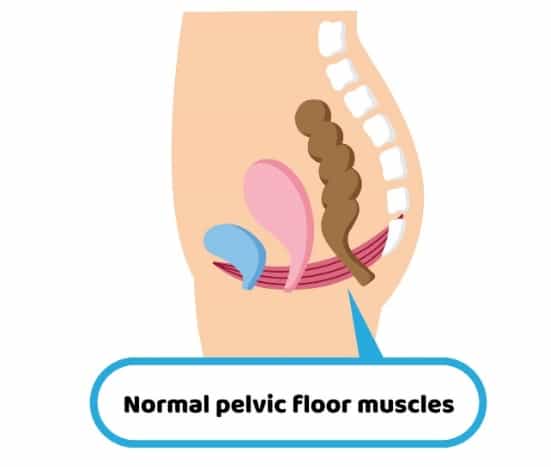
- Pessary - a removable device inserted through the vagina to support the pelvic organs
- Lifestyle changes, such as pelvic floor exercises and changing eating habits
- Surgery to implant a supportive sling made of the woman’s own tissue, donor tissue or surgical mesh
Stress Urinary Incontinence (SUI)
Stress Urinary Incontinence occurs when urine leaks during activities that place sudden stress on the bladder and urethra. This causes the muscles to open slightly, allowing the leakage.
In mild cases, activities like sneezing, jumping, exercising, and coughing can trigger a leak. In severe cases, merely standing up can trigger leaks.
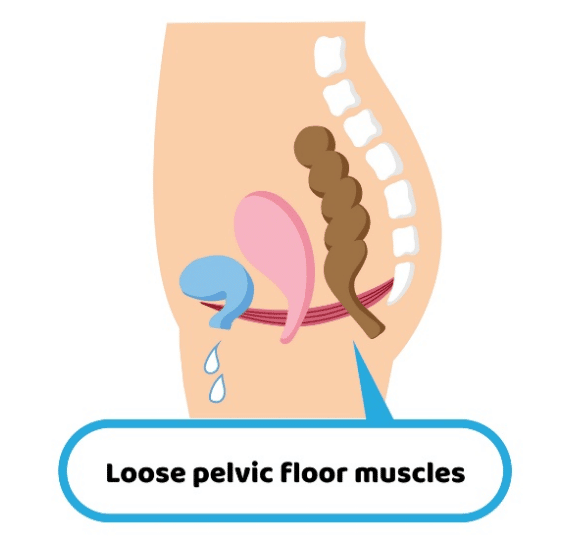
- Lifestyle changes
- The use of absorbent pads
- Kegel exercises (pelvic floor exercises)
- Increasing fiber to improve bowel function, as constipation can worsen incontinence
- Maintaining a healthy weight
- Bladder training
- Quitting smoking
- Devices
- Vaginal pessaries
- Urethral plugs to be used during periods of high activity
- Surgical slings placed under the urethra, most commonly the mid-urethral sling, made of body tissue, donor tissue or surgical mesh
Complications from Transvaginal Mesh
Surgical mesh is a net-like material that has been used in the treatment of abdominal hernias since the 1950s. It can also be used in heart stents. During the 1970s, gynecologists began using it to treat pelvic floor disorders, including POP and SUI, by implanting it through abdominal surgery.
In the 1990s, practitioners developed a less invasive approach of insertion through a small incision in the vagina. Mesh implanted in this manner is known as transvaginal mesh, a method that received FDA approval in 2002.
Implanting transvaginal mesh requires specialized surgical skill, but the product was marketed heavily to gynecologists who may have lacked these skills. While mesh inserted surgically through the abdomen has not resulted in widespread complications, transvaginal mesh has caused the following:
- Infections
- Return of prolapse
- Worsening incontinence
- Vaginal scarring
- Perforation of pelvic organs
- Erosion and dropping away of the mesh from the site, resulting in protrusion from the vagina
Surgery is urgently needed for these complications. It requires even more specialized skill because often the vaginal tissue has grown into the mesh, and the separation process is delicate and complex.
The FDA recalled transvaginal mesh in 2019. The FDA estimates over 300,000 women were implanted with vaginal mesh. Lawsuits against transvaginal mesh manufacturers have resulted in multi-billion dollar settlements.
Surgical mesh implanted through the abdomen and mid-urethral slings are considered safe and are not part of the recall or the litigation.
Urinary Tract Infections (UTIs)
Urinary tract infections are infections of any of the urinary system organs, which include the bladder, urethra, and kidneys. Most infections involve the bladder and urethra. UTIs are more common in women than in men.
- Constant urge to urinate
- Burning sensation during urination
- Strong-smelling urine
- Pain in the center of the pubic bone
- Red, pink, or brown urine, indicating the presence of blood
- Cloudy urine
- Back or side pain
- High fever
- Nausea and vomiting
Causes and Risk Factors
UTIs are most commonly caused by bacteria entering the urinary tract. Women experience a higher risk due to the close proximity of the bladder and urethra to the anus and vagina. Bacteria from sexual contact, the gastrointestinal tract, or sexually transmitted infections can enter the urethra and cause infections.
Hormonal changes during menopause and birth control methods involving diaphragms and spermicides also increase women’s risk of developing UTIs. Other risk factors include catheter use, diabetes, and urinary tract abnormalities.
Urinary tract infections may not cause the same symptoms in elderly adults and can be difficult to identify. For example, mental confusion that mimics dementia is a common UTI symptom in elderly adults.
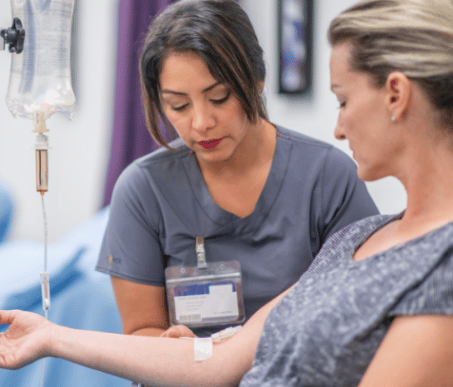
Treatment
Urinary tract infections are typically treated with antibiotics. Resistant infections may require intravenous antibiotic therapy in the hospital.
Untreated UTIs can lead to more serious conditions:
- Recurrent infections
- Permanent kidney damage
- Risk of low birth weight and preterm labor
- Sepsis, a life-threatening infection
Elmiron
Elmiron is a drug used to treat cystitis, a condition characterized by bladder pain and inflammation. This product can cause the following conditions:
- An allergic reaction
- Nosebleeds
- Bleeding gums
- Blood in the urine or stools
- Rectal bleeding
- Coughing up blood
- Lightheadedness
- Pigmentary maculopathy
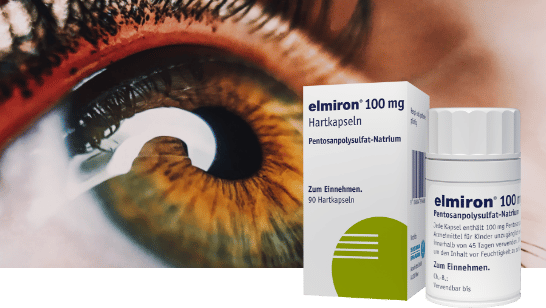
Pigmentary Maculopathy
The active ingredient in Elmiron, pentosan polysulfate sodium (PPS) is the only known cause of pigmentary maculopathy, the symptoms of which include dark spots in the vision field, difficulty reading or adjusting to dim lighting, loss of color perception, eye strain, blurred vision and blindness.
The condition is often misdiagnosed as age-related macular degeneration or pattern dystrophy.
More than 600 Elmiron lawsuits against Johnson & Johnson’s subsidiary Janssen Pharmaceuticals are pending amid allegations that Johnson & Johnson knew soon after releasing the product in 1996 that it could be linked to eye damage.
Johnson & Johnson ignored the evidence. In 2018, the link was established through clinical studies, but Johnson & Johnson did not provide warnings until 2020.
Menopause
- Changes in their period
- Hot flashes
- Night sweats
- Urinary incontinence
- Trouble sleeping
- Mood changes
- Vaginal dryness
- Reduced libido
- Loss of muscle tone
- Weight gain
- Stiff, aching joints
- Headaches
- Heart palpitations
Menopause is a normal part of aging that women experience during their mid-forties into their fifties. It marks the end of the female reproductive cycle. During this time, estrogen declines and periods cease.
The transitional period leading up to menopause is perimenopause. Women often experience the following uncomfortable symptoms during perimenopause and menopause:

Osteoporosis
Osteoporosis is characterized by bone loss. It is more common in women. Approximately 10% of women over the age of 60 are afflicted. Osteoporosis increases the risk of bone fractures, including hip fractures, reduced mobility, quality of life, and lifespan. Additional symptoms include the following:
- Back pain due to a fractured or collapsed vertebra
- Loss of height
- Stooped posture

Osteoporosis is often treated with calcium and Vitamin D supplementation. A class of drugs known as bisphosphonates, such as Fosamax, is also an effective treatment for this condition.
- Smaller body frame
- Family history
- Overactive thyroid, parathyroid, or adrenal glands
- Eating disorders
- Low calcium intake throughout life
- Gastrointestinal surgery
- Long-term use of medications that treat seizures, gastric reflux, and cancer
- Celiac disease
- Cancer
- Rheumatoid arthritis
- Sedentary lifestyle
- Alcohol or tobacco use
Fosamax Side Effects
The body is constantly in a state of breaking down old bone and replacing it with new bones. Fosamax is a bisphosphonate, which works by slowing down the body’s natural process of breaking down bone.
The most common side effect is heartburn or similar gastrointestinal issues. Replacing one bisphosphonate with another often remedies this issue.
Approximately one in 50,000 patients taking Fosamax develops osteonecrosis of the jawbone, a condition characterized by a deteriorating jawbone.
Patients with a history of cancer have the highest risk of developing this side effect. Femur fractures are another rare side effect.
Many physicians recommend a two-year break after taking Fosamax for the first three years to reduce these risks.
Alzheimer’s
Alzheimer’s is a deadly degenerative disease that impacts memory and cognitive function. It is most common in adults older than 65 and women. As many as two-thirds of Alzheimer’s cases are in women.
While no one knows the reasons for this, researchers point to the following characteristics of women as potential factors:
- Longer lifespan
- Structural and functional differences in women’s brains
- Work and family patterns

The most common early symptom of Alzheimer’s is difficulty remembering newly learned information. It is a progressive condition characterized by increasing symptoms of dementia until patients can no longer carry conversations, recognize loved ones or care for themselves. It is one of many types of dementias that affect older adults.
There is no cure for Alzheimer’s. Treatment is normally focused on slowing its progression. One promising new drug, Aducanumab, is showing promise.
The underlying issue behind Alzheimer’s disease is the buildup of amyloid plaques in the brain. Removing these plaques can reduce the cognitive and functional decline in Alzheimer’s patients.
This drug received accelerated approval by the FDA and is the first approved drug that addresses amyloid plaques.
Cardiovascular Disease
Heart Disease
One out of four women will die of heart disease, which is the leading cause of death for both men and women in the United States.
Because women’s symptoms are not always obvious, they are not as often diagnosed early.
Symptoms of heart disease in women include:
- Neck, jaw, shoulder, back, or abdominal discomfort
- Shortness of breath
- Arm pain
- Nausea or vomiting
- Sweating
- Lightheadedness/dizziness
- Unusual fatigue
- Heartburn/indigestion

- High cholesterol
- Obesity
- Diabetes
- Emotional stress/depression
- Smoking
- Inactivity/sedentary lifestyle
- Menopause
- High blood pressure or diabetes during pregnancy
- Family history of heart disease
- High blood pressure or diabetes during pregnancy
Stroke
3rd
leading cause of death among women

Ischemic

Hemorrhagic stroke

Transient Ischemic Attack (TIA) or “mini-stroke”

Risk factors – High blood pressure
Long-term effects




- Treatment varies based on the type and location of the stroke
- Removal of obstruction/clot in ischemic strokes
- Microcatheter-based surgery from the groin to the site of the stroke followed by medication directly to the area or other endovascular treatments
- Surgical relief of the intracranial pressure
- Removal of aneurysms followed by close monitoring and measures to reduce swelling or other complications
- A long period of rehab may be required

Be your own health advocate.




Adopt a healthy lifestyle.

- Maximum of 16 ounces of coffee per day
- Maximum of one alcoholic drink per day

- Include a combination of resistance training, aerobic exercise, and balance training.
- Keep it fun so you will stay motivated.




- Eat plenty of fruits and vegetables.
- Include a rainbow of colors.
- Avoid sugar and processed foods.
- Consume at least 64 ounces of water daily.

- Go to bed and wake up at the same time each day.
- Avoid the use of electronics close to bedtime.
- Aim for eight hours of sleep daily.
- Keep your sleep area dark and cool for the highest quality sleep.

- Perform recommended self-breast exams.
- Take medications as directed.
- Educate yourself about your health.
- Attend annual wellness exams and preventive care screenings recommended by your doctor.
By submitting this form, you agree to our terms & conditions. Please read the full disclaimer


